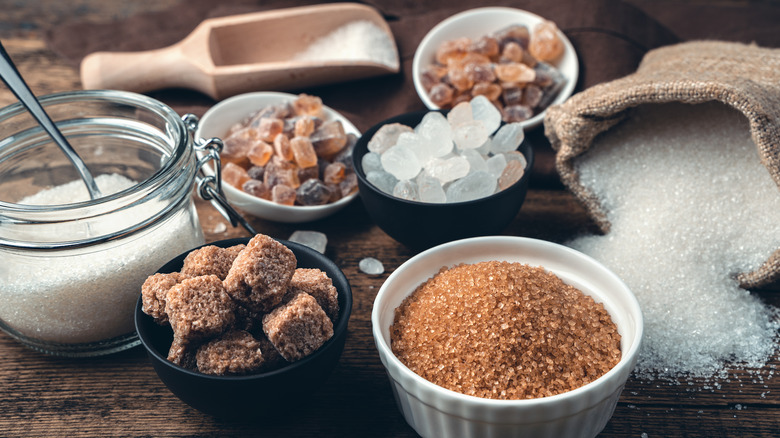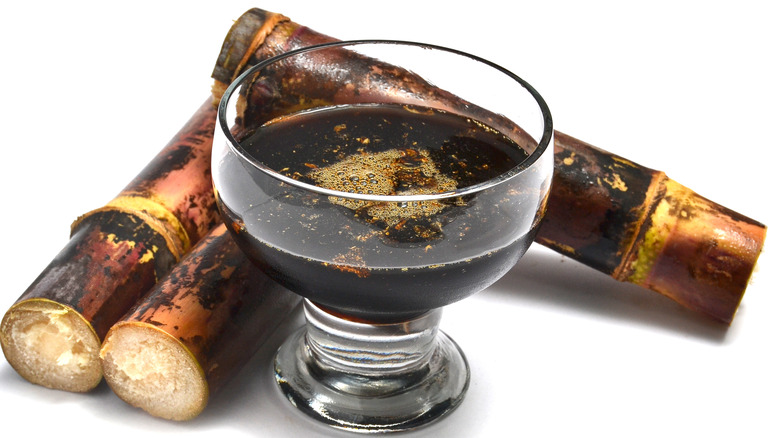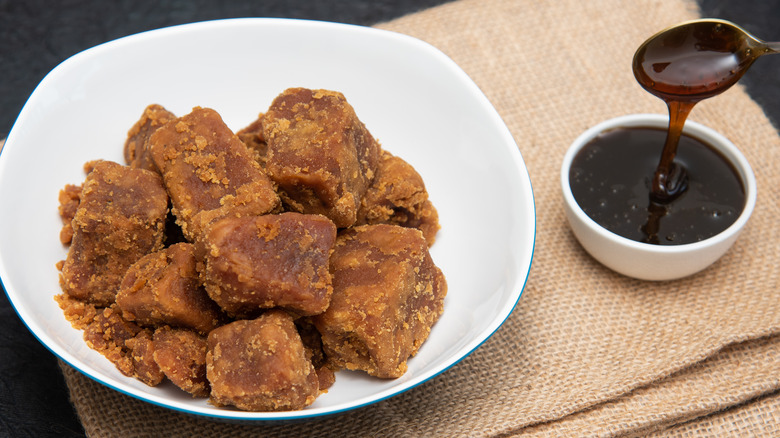An Aluminum Foil Hack Can Help Revive Stale Brown Sugar
Sugar was once one of the most sought-after commodities in the world, and it's become one of the most essential ingredients used in modern cuisine. Though sugar's popularity has had its ups and downs in recent years given the rise of alternative and artificial sweeteners, sugar remains a staple for any well-stocked pantry. Though nearly all sugar is made from extracting and refining the juice from sugar beets and sugar cane plants, there's still a wide variety of sugar classifications and designations.
From a molecular standpoint, there are six essential sugars, according to Rise Up Nutrition: glucose (the most common natural sugar), fructose (also naturally found in plants, specifically fruits and nectar), galactose, lactose (sugar in milk products), maltose (fermentation by-product sugar), and sucrose, which is the most commonly used kitchen sugar.
From a baker's or confectioner's perspective, the Sugar Association tells us that there are even more categories depending on the coarseness, color, and functional characteristics of the sugar. For white sugars, categories are defined mostly by coarseness: regular granulated, superfine, coarse, and powdered. There are also liquid sugars, designated by their proportions of sucrose, glucose, and fructose. Lastly, brown sugar is classified by the amount of refinement or added molasses, which contributes moisture and flavor but also causes old brown sugar to clump up and dry out. But one kitchen hack with aluminum foil can help save your stale brown sugar.
Why does brown sugar clump?
One way to revive brown sugar once it's hardened is to loosen the molasses with heat. Domino Sugar recommends a trick using aluminum foil: Encase a pebble of brown sugar, and bake it in an oven at 250 F for five minutes. The heat allows the molasses in the brown sugar to release the last bit of moisture, temporarily loosening the clumps, while the tin foil helps retain any bit of moisture that my try to escape in the process. Alternative methods of loosening brown sugar (such as briefly microwaving a clump) may work for a few seconds, but without something covering it, the sugar will soon reharden.
Molasses is a natural syrupy by-product of sugar refinement and is essential in all forms of brown sugar. It's what gives brown sugar its dark color, rich flavor, and chewy texture, but it's also the reason brown sugar gets stale and unusable (per Food Network).
All types of brown sugar exist on the molasses spectrum. On one end, unrefined muscovado sugar retains all of its natural molasses; on the other end, Turbinado (or Demerara/ raw cane sugar) is partially processed, leaving only a hint of molasses flavor and color. The more molasses in a brown sugar, the easier it clumps. But when brown sugar isn't properly stored, moisture escapes, the molasses to hardens, and the brown sugar forms dense rocks.
Proper brown sugar storage
The aluminum foil trick may be useful for reviving stale brown sugar, but proper storage is the first step to ingredient longevity.
For brown sugars with little molasses or moisture continent, such as Turbinado or free-flowing brown sugar, clumping is not as much of an issue. But for light brown, dark brown, and Muscovado sugar, Domino Sugar suggests storing them in a moist area in a "rust-proof container with a tight-fitting lid" or in a "resealable, moisture-proof plastic bag." Brown sugars should generally be used within six months of opening.
Alternatively, freezing brown sugar can help it retain moisture for longer periods of storage in dryer areas. Just be sure to unclump the sugar as it thaws. One more method for keeping brown sugar fresh includes adding a touch of moisture to the container via a lightly dampened paper towel or a terra cotta disk. Even a slice of bread or a couple of marshmallows have enough excess moisture to prevent the molasses in brown sugar from dehydrating and can drastically improve the longevity of your brown sugar, as long as the container remains tightly sealed.


